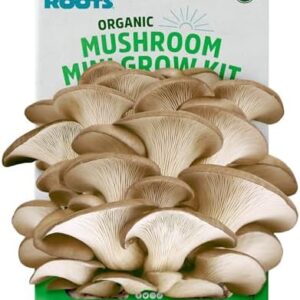Have you ever wanted to grow your own plants but didn’t know where to start? Plant propagation is a great way to create new plants from existing ones, and it’s a skill that anyone can learn. In this comprehensive guide, we’ll unlock the secrets of plant propagation and show you how easy it can be to grow your own garden.
First off, what is plant propagation? Simply put, it’s the process of creating new plants from existing ones. There are several methods of propagation, including sowing seeds, taking cuttings, dividing plants, and grafting. Each method has its own benefits and challenges, but with a little practice, you can become a pro at propagating plants.
One of the easiest ways to propagate plants is by sowing seeds. This method is ideal for annuals, perennials, and vegetables. All you need to do is collect seeds from mature plants, sow them in soil, and keep them moist until they germinate. It’s a simple and cost-effective way to grow new plants, and it’s a great project for beginner gardeners.
Taking cuttings is another popular method of plant propagation. This technique involves cutting a piece of stem or leaf from a plant, placing it in soil or water, and waiting for it to grow roots. Cuttings can be taken from a variety of plants, including herbs, houseplants, and shrubs. With the right conditions, cuttings can quickly grow into healthy new plants.
Dividing plants is a common method of propagation for perennials, such as hostas and daylilies. This technique involves splitting a mature plant into smaller sections, each with its own roots and shoots. Dividing plants can help control their size and rejuvenate them, and it’s a great way to expand your garden without spending any money.
Grafting is a more advanced method of plant propagation that involves combining two different plants to create a new one. This technique is commonly used in fruit tree production, where a fruiting variety is grafted onto a rootstock for improved growth and productivity. Grafting requires precision and skill, but with practice, you can master this art and create your own unique plant varieties.
Now that you know the basics of plant propagation, it’s time to get started. The first step is to choose the right plants for propagation. Select plants that are healthy, disease-free, and well-suited to your climate and growing conditions. It’s also important to choose plants that are easy to propagate, such as herbs, succulents, and houseplants.
Once you’ve selected your plants, it’s time to choose a propagation method. If you’re new to plant propagation, start with sowing seeds or taking cuttings, as these methods are the easiest and most forgiving. As you gain confidence and experience, you can move on to more advanced techniques, such as dividing plants and grafting.
To successfully propagate plants, it’s important to provide the right growing conditions. Most plants prefer bright, indirect light, well-draining soil, and regular watering. Temperature and humidity are also important factors to consider, especially for tropical and subtropical plants. By understanding the needs of your plants and providing them with the right care, you can ensure successful propagation.
As you practice plant propagation, don’t be afraid to experiment and try new methods. Every plant is unique, and what works for one may not work for another. Keep an open mind and be patient, as propagation can take time and effort. With practice and perseverance, you’ll soon become a master propagator and enjoy the rewards of growing your own plants.
In conclusion, plant propagation is a fun and rewarding way to create new plants and expand your garden. Whether you’re a beginner or an experienced gardener, there’s always something new to learn and discover in the world of propagation. With our comprehensive guide, you’ll unlock the secrets of plant propagation and unleash your green thumb. So go ahead, give it a try, and watch your garden thrive and grow.






